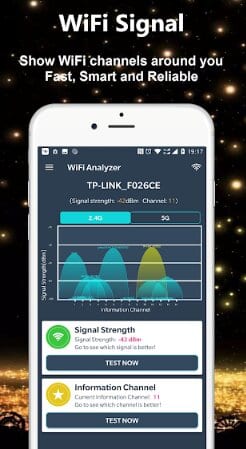

Because many organizations need their network to be up and functioning to generate revenue, having the right set of tools to monitor and manage the one you so lovingly created is critical.īut how do you find the best network monitoring tools when there are hundreds of commercial products, freeware tools, and open-source software to choose from? While the debate about free versus commercial goes on, there are tried and tested, free network monitoring tools that many network admins swear by. To build a network, you start with an architecture, draw the design, and analyze and choose the hardware that meets your requirements. But now that time has passed, the landscape has changed, and we think it’s worthwhile to review those old choices and possibly add a few new ones. And honestly, those reviews have stood the test of time. In other words, it will show us others which our computer can access, together with the dBm, indicating the strength of the signal received.Way back in 2015, we reviewed the must-have top free networking tools. On the other hand, from the "Networks" tab we can view which is the best network we can have access to. From there, we'll be able to see a list of all the free and used frequencies. The frequency conflicts can be found in the second tab, called "Analyze". Once we've configured everything, it will show us all kinds of vital information about our connection in the first tab, as well as our IP address, the protocol of our network card, our BSSID or the amount of time our connection has been active. It's very important to choose the right one, because if not the results won't be at all accurate.

The first time that we open it, we'll have to choose our region. Windows comes along with a built-in tool that's run from the command line but, at the end of the day, it's extremely basic. On many occasions, it's the device itself that realizes that there's a problem, but if it doesn't we'll have to change it ourselves.Īnd that's where WiFi Analyzer comes in, a program that helps us out by showing us all the frequencies, among other things, to see which one is the best. You can chooe the best configuration for your router.įrequency conflicts are one of the greatest problems for WiFi connections, but there's a very simple solution: entering our router and changing the frequency. The fact is that if we use the same frequency as the PC of our neighbor or the bar we've got over the road, we'll probably end up with a very bad connection. The latter, the frequency with which a network transmits, is very important as it's a key aspect when it comes to configuring our router. With WiFi Analyzer you can carry out an analysis and discover the status of your WiFi network for instance, or find the best frequency to transmit the signal.


 0 kommentar(er)
0 kommentar(er)
